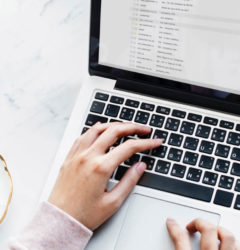03 Apr

Writing a business proposal can be intimidating, especially for new business owners. As with any type of proposal, stating why you’re the best choice can be scary. But that’s if you don’t know how to do it right.
In this article, we’ll delve into the art of business proposal writing. We’ll give you tips on how to write convincing letters that your clients will say yes to. Plus, we’ll see how writing business proposals is different from a project proposal. Lastly, we’ll help make it easy for beginners in the field of writing and business.
What is a Business Proposal?
A business proposal is a document or letter sent to a potential client to offer a product or service. It aims to persuade the client to do business with you. A business proposal identifies a problem, provides a solution, and explains why your company is the right choice.
It’s easy to understand why some people confuse a business plan with a project plan. The similarities can sometimes be hard to distinguish. A simple explanation would be that a business proposal encompasses a more significant scope than that of a project proposal.
A project proposal is one that offers work undertaken by a company, whereas a business proposal covers all commercial transactions, project proposals included. A business proposal may consist of several projects, while a project proposal is the implementation of a specific objective.
Gather Information
When a business opportunity opens, the first thing that comes to mind is to grab it ASAP. Doing so is like going to war without weaponry. To create a business proposal that has a high chance of approval, you need to arm yourself with information.
If possible, speak to the client to understand who they are, what their pain points and requirements are. After analyzing at what they’re after, take a closer look at what your company can offer. Understand the budget, who will make the decision, the timeline, and see if there were attempts and why they failed.
Determine the Objectives and Scope
Know the reason for the business proposal. Define the purpose and make sure that you don’t lose sight of the objectives for you to write a proposal that’s likely to be accepted. Identifying the goals can help you articulate your proposition well.
Additionally, it’s equally important to know the scope of the project for you to write a good business proposal. You can create an outline of the amount of work that needs to be done to fulfill the client’s expectations. This step will define who will do the job, what your proposed solutions are, what the timeline is, how much it will cost, and how you are going to do it.
Draft your Business Proposal
Now that you’ve armed yourself with enough artillery, it’s time to draft that business proposal. Generally, a business proposal should have three main parts:
- An introduction that summarizes your company and the project
- A body that contains all the details (preferably with charts, photos, or a pricing list)
- A conclusion that tells the potential client how to proceed (a call to action)
Here are the elements that you need to include in your business proposal:
1. Cover/Title Page

This is the part where you introduce yourself and the company you represent. Include your contact information, the date, and the name of the client or their representative. Here is an example of a title page from MS Word Cover Page Templates.
2. Table of Contents

A table of contents is only optional, especially if your business proposal is a brief one. It helps the reader get an overview of what to expect from your proposal. For their ease and convenience, you can create a table of contents that they can click on to direct them to a particular page.
3. Executive Summary

As the name suggests, this part is a summary of your business proposal. But there’s more to it than that. It is also a crucial part as it highlights why you are the right choice for them. This is the best opportunity for you to show why you’re the solution to their problem.
4. The Proposal
Here’s where you’ll be stating the problem and the solutions to them. Include a description of the expected outcome as well as a general timeline.
5. The Proposed Solution

In the step above, you’ll give them an overview of your proposed solution. This is the part where you’ll go into detail about it. Anticipate questions and get into the specifics, providing them the answers even before they ask.
6. Your Qualifications
This is the step where you’ll give them all the reasons to choose you over the others. Describe why you’re the perfect fit by including your experience and expertise.
7. Pricing

Where possible, provide a pricing table where the potential client can see and possibly calculate the costs for them. Be careful as you don’t want to overestimate or underprice your products or services. It’s also a good idea to include another table for optional products or services.
8. Terms and Conditions
This is the part where you go into the specifics. Here is where you’ll discuss further the timeline, the payment schedules, and a summary of what you will agree on. It’s best to consult your legal team before sending your proposal.
9. Agreement
Make it easy for the client to commit by placing a signature box in this area. Add a section for the date and let them know what they’re agreeing to.
10. Call to Action

Let your potential client know how to proceed with your business proposal. Include detailed contact information and who to contact in case they have questions.
11. Proofread Your Work
After doing all these steps in your business proposal writing, edit your work. Let them know you’re a professional by sending them an error-free proposal. Re-read your work or ask someone else to read it in case there’s something you might have missed.
Final Thoughts
Business proposal writing is a skill that every entrepreneur should master. It’s a part of reaching out to prospects and persuading them to do business with you. It can be an overwhelming task at first, but once you learn the ropes, it’s smooth sailing from then on.










